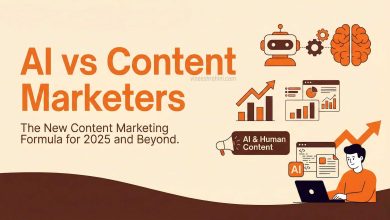Conversion Rate Optimization (CRO): Comprehensive Guide 2023
In the ever-expanding digital landscape, where websites and online platforms serve as the storefronts of the modern age, businesses face a crucial challenge: converting visitors into customers. Conversion Rate Optimization (CRO) stands at the intersection of psychology, design, data analysis, and digital marketing strategy. This essay delves into the depths of Conversion Rate Optimization, exploring its fundamental principles, methodologies, and the profound impact it has on the success of businesses in the online realm. With a focus on user experience, data-driven decision-making, and continuous experimentation, CRO has become the linchpin for digital marketing success.
Understanding Conversion Rate Optimization
Conversion Rate Optimization is the systematic process of increasing the percentage of website visitors who take the desired action — be it making a purchase, filling out a form, signing up for a newsletter, or any other goal that aligns with the business objectives. Unlike attracting more traffic, which is a common focus in digital marketing, CRO emphasizes enhancing the existing traffic’s quality and engagement, ultimately boosting the website’s overall performance.
Also Read…. CPC (Cost Per Click)
Key Components of CRO:
- User Experience (UX) Design: Creating intuitive, user-friendly interfaces that guide visitors seamlessly through the website, ensuring a frictionless experience.
- Data Analysis: Utilizing tools like Google Analytics and heatmaps to analyze user behavior, identify patterns, and pinpoint areas for improvement.
- A/B Testing: Conducting experiments by presenting different versions of a webpage to users and determining which version performs better in terms of conversions.
- Multivariate Testing: Testing multiple variations of different elements on a webpage simultaneously to identify the most effective combination.
- Personalization: Tailoring content, offers, and user experiences based on individual user preferences, demographics, and behaviors.
The Importance of Conversion Rate Optimization
1. Maximizing ROI:
Effective CRO strategies ensure that the marketing budget is spent efficiently. By converting a higher percentage of existing traffic, businesses can maximize their return on investment (ROI) without necessarily increasing their advertising expenditure.
2. Enhanced User Experience:
A website optimized for conversions is inherently user-centric. By focusing on factors like page load speed, mobile responsiveness, and intuitive navigation, CRO enhances the overall user experience, fostering trust and credibility.
3. Informed Decision-Making:
CRO relies heavily on data analysis. By deciphering user behavior, businesses gain valuable insights into customer preferences and pain points. This data-driven approach empowers informed decision-making, allowing businesses to tailor their strategies to meet customer needs effectively.
4. Competitive Advantage:
In a fiercely competitive digital landscape, businesses that invest in CRO gain a significant edge. A website that is continuously optimized to convert visitors into customers outperforms competitors who neglect the importance of user experience and data-driven improvements.
Methodologies in Conversion Rate Optimization
1. User Research:
Understanding the target audience is the first step in CRO. Conducting surveys, analyzing customer feedback, and employing tools like user personas provide valuable insights into user preferences and expectations.
2. A/B Testing and Experimentation:
A/B testing involves creating two or more versions of a webpage with slight variations and directing traffic to these versions randomly. Through statistical analysis, businesses can determine which version performs better, allowing for data-driven decision-making.
3. Landing Page Optimization:
Landing pages play a pivotal role in conversions, especially for digital marketing campaigns. Optimization techniques focus on compelling headlines, persuasive copy, clear calls to action, and visually appealing designs, guiding visitors towards the desired action.
4. Checkout Process Optimization:
For e-commerce websites, the checkout process is critical. Optimization efforts include minimizing the number of steps, offering guest checkout options, displaying trust signals, and ensuring secure payment gateways to reduce cart abandonment rates.
5. Personalization and Behavioral Targeting:
Personalization involves tailoring content and offers based on user behavior, preferences, and demographics. Behavioral targeting utilizes data to show relevant products or services, increasing the likelihood of conversion.
Also Read… What is Click-Through Rate (CTR)
Overcoming Challenges in Conversion Rate Optimization
1. Limited Resources:
Small businesses often face resource constraints. However, various affordable tools and platforms are available, allowing even businesses with modest budgets to implement basic CRO strategies.
2. Technical Expertise:
Implementing advanced CRO techniques might require technical expertise. Training internal teams or outsourcing CRO efforts to specialized agencies can bridge this knowledge gap.
3. Resistance to Change:
Organizational resistance to changing established website designs or content can hinder CRO efforts. Educating stakeholders about the potential benefits of optimization and presenting data-driven arguments can address this challenge.
4. Rapid Technological Advancements:
The digital landscape evolves rapidly. Keeping up with technological advancements and consumer preferences requires continuous learning and adaptation. Businesses need to stay informed and agile to remain competitive.
Case Studies: Real-World Impact of Conversion Rate Optimization
1. Shopify:
Shopify, a leading e-commerce platform, implemented CRO strategies to optimize its checkout process. By simplifying the checkout form and reducing the number of steps, they witnessed a 10-12% increase in conversions, leading to substantial revenue growth.
2. Dropbox:
Dropbox utilized A/B testing to optimize its referral program. By experimenting with different incentives and calls to action, they achieved a 60% increase in referrals, significantly expanding their user base.
3. Amazon:
Amazon, a giant in e-commerce, employs sophisticated personalization algorithms. By recommending products based on past purchases and user behavior, they have substantially increased cross-selling and upselling opportunities, leading to higher conversion rates and revenue.
Future Trends in Conversion Rate Optimization
1. Artificial Intelligence (AI) and Machine Learning:
AI-powered tools can analyze vast datasets and predict user behavior patterns. Machine learning algorithms enable personalized recommendations and predictive analytics, enhancing CRO efforts significantly.
2. Voice Search Optimization:
As voice-activated devices become ubiquitous, optimizing websites and content for voice search queries will be crucial. CRO strategies will need to adapt to accommodate the unique challenges posed by voice-based interactions.
3. Enhanced Personalization:
The future of CRO lies in hyper-personalization. Utilizing AI and machine learning, businesses can create individualized user experiences, increasing the relevance of content, products, and offers.
4. Mobile-First Optimization:
With the majority of internet users accessing websites via mobile devices, optimizing for mobile-first experiences is paramount. CRO strategies will focus extensively on mobile responsiveness, ensuring seamless user interactions on smartphones and tablets.
Conclusion
Conversion Rate Optimization is not merely a digital marketing strategy; it is an art and a science that transforms casual visitors into loyal customers. By understanding user behavior, employing data-driven techniques, and embracing continuous experimentation, businesses can unlock the full potential of their online presence. In the digital age, where user experience reigns supreme, CRO is the linchpin that bridges the gap between visitor engagement and tangible results. As technology advances and consumer expectations evolve, the role of Conversion Rate Optimization will continue to be instrumental, shaping the future of digital success for businesses worldwide.



